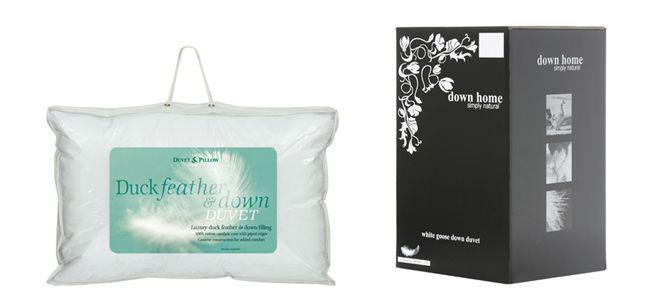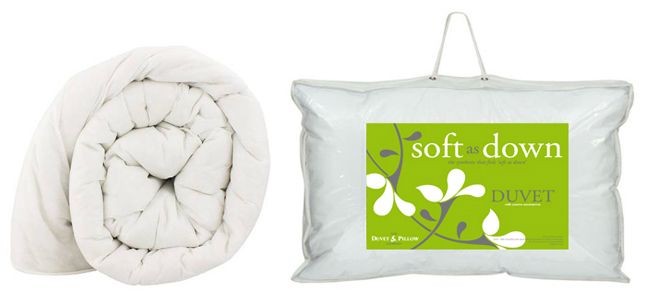What Is The Best Duvet?

Do togs and fillings make no sense? Well here at Linens Limited HQ we’ve come up with a comprehensive guide to finding the ideal duvet for your needs. No matter whether you are member of the bed socks brigade or naturally hot blooded, here you will find all you need to know about sizes, tog ratings and fillings.
What Do You Need To Know Before Buying A Duvet?
One of the most important things to know before deciding on a duvet is the size. Measure your bed and match it to our duvet measurements below. If your partner is a duvet hogger, choose a king or super king to make sure that there is plenty for everyone.
- Single 135 x 200cm
- Double 200 x 200 cm
- King 230 x 220cm
- Super King 260 x 220cm
After you have established the right size duvet, you will need to make the choice between natural or synthetic fibre. As a general rule, natural fibre such as feather and down, tend to be more expensive. Natural fillings give a higher level of warmth and as such, are generally thought of as more luxurious. Synthetic duvets are available in a wide variety of tog ratings which makes them suitable for all the family.
Natural Feather and Down
Natural fibre duvets contain feathers or down, or a blend of the two. These are sourced from ducks and geese found in some of the coldest regions of the globe. Allowing your body to breathe, feather and down traps air to create a warm cover that is soft and flexible.
- Feather – Flat and naturally curved in shape, feathers have a quill running between the fibres. Heavier than down, feather duvets often have a more substantial feel.
- Down – These are the soft, fine filaments found under the feathers of geese. Light and one of the most effective natural insulators, down will keep you warm in the winter and cool in the summer.
At Linens Limited HQ we have sourced our duvets from some of the best manufacturers. We offer quality Hungarian and Siberian down to ensure a great night’s sleep.
- Hungarian down – Sourced from the coldest parts of Hungary, birds here have developed insulating coats which keep them super warm.
- Siberian goose down – In Siberia harsh winters can drop below -50⁰c, as such Siberian geese have developed coats which are big and fluffy to guard against the sub-zero temperatures.
Synthetic Hollow or Microfibre
Synthetic duvets are much lighter than natural filled duvets whilst providing a fantastic level of warmth. Choose from either microfibre or hollowfibre which are available as hypoallergenic. Inherently free from dust mites and impurities, synthetic duvets are the most popular choice from people who suffer from allergies.
- Hollowfibre – As the name suggests, each fibre is hollow which allows for the air to be effectively trapped increasing warmth.
- Microfibre – A fine quality microfibre, this replicates the luxurious feel of down. As with hollowfibre, microfibre duvets are beautifully warm whilst remaining lighter than natural fillings.
What Tog Rating Should You Choose?
So you have chosen your duvet filling; now it is time to select the tog rating. This is a scale of warmth given to duvets according to their thermal insulation properties. Just because a duvet is thick, doesn’t mean that it is warmer. The tog rating is an ascending scale ranging from cool and lightweight duvets at 1.5 tog to extra snug duvets at 15 tog.
Image Credit: johncotton.co.uk
All season duvets are also available which offer you complete flexibility. The separate lightweight summer duvet can be buttoned onto to the heavier autumn duvet to provide an excellent winter duvet.
What Duvet Should My Child Have?
If you are looking to buy a new duvet for your child, it is recommended to stick with a lightweight duvet, no heavier than 10.5 tog. As children are smaller than adults, there is a larger air gap created which improves the level of warmth.
- Babies under 12 months – Babies should not sleep with a duvet, quilt or pillow. It is advised to either use a baby sleeping bag at 2.5 tog or in the winter and 1 tog in the summer.
- Children under 10yrs – Their first duvet should be a light tog rating at 3 or 4.5 tog.
- Children over 10yrs – Older children may want a snug 10.5 tog duvet in winter if their room is cool. To help regulate their temperature, leave a folded blanket at the end of the bed in the event they need an extra layer.
How to Look After Your New Duvet
To preserve the quality of your duvet we recommended that you only wash your duvet when necessary. Always follow the care instructions found on the label and ensure that your bedding is thoroughly air dried before returning it to your bed. Natural fibre bedding cannot be dry cleaned as this will damage the fillings.
At Linens Limited we have 1000’s of duvets ready to ship. Save £££’s and buy direct online for amazing prices.
Add a comment




